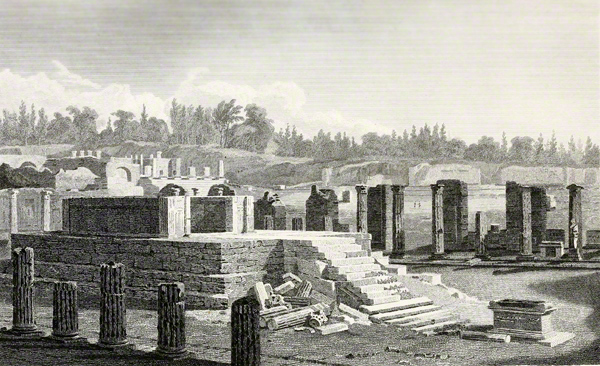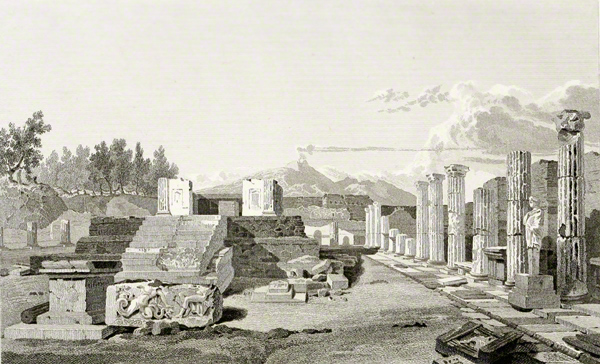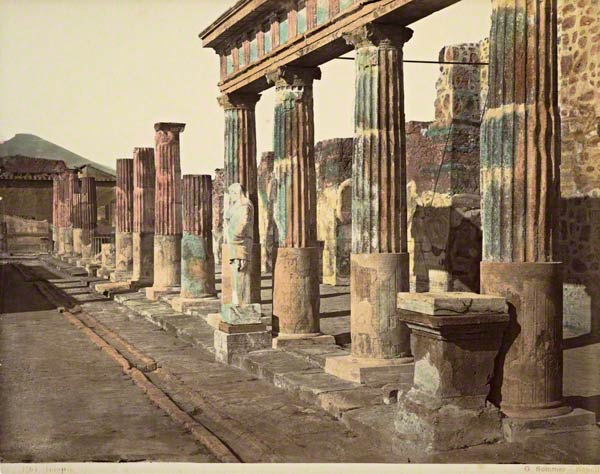The Temple of Apollo at Pompeii
The statues of Apollo and Diana as archers were once displayed opposite one another in the colonnaded courtyard of the Temple of Apollo at Pompeii. Established in the sixth century B.C., the sanctuary received its definitive form in the second century B.C.
Like many public spaces in Pompeii, the temple building and its sacred precinct were a place for citizens to set up sculptures, dedications, and other offerings. The date when the Apollo and Diana were installed is unknown.
![]() Explore the Temple of Apollo and other ruins of Pompeii using Google Maps.
Explore the Temple of Apollo and other ruins of Pompeii using Google Maps.
The well-preserved ruins of the Temple of Apollo made it a popular subject for drawings. The engravings shown below, from William Gell and John Peter Gandy, Pompeiana: The Topography, Edifices, and Ornaments of Pompeii (1817–1819), were some the earliest illustrations of the temple. They were rendered not long after the sanctuary was excavated and around the time the statue of Apollo was discovered. The second engraving below looks north toward Mount Vesuvius.


By the late 19th century, photographs of Pompeii made the site accessible to a wider audience. The hand-colored image below shows that the pedestal on which the statue of Apollo once stood (in the foreground) was still empty in the 1870s. In the early 1900s, a modern replica of the Apollo was set up here, and remains in place today. (See a photo of the replica here).
